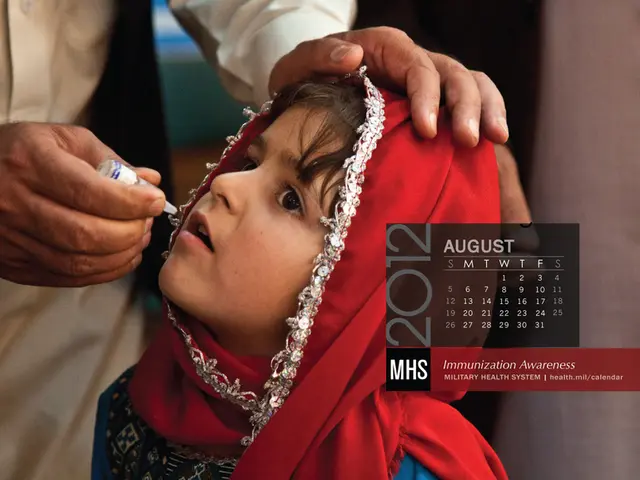Skin Care Measures for a Person Suffering from Shingles: What You Need to Know
In managing shingles, a viral infection caused by the varicella-zoster virus, a combination of medical treatment, symptom relief, hygiene practices, and preventive actions is essential.
Daily Rash Care
Keep the affected area clean and dry to avoid infection. Use cool, moist washcloths or compresses on the rash to soothe pain and help dry the blisters. Avoid scratching to prevent scarring and secondary infection.
Easing Itching
Apply calamine lotion or take oatmeal baths to soothe itching and irritation. Wearing loose-fitting, breathable natural-fiber clothing helps reduce friction and discomfort.
Bandaging
Generally, it's best to keep the rash uncovered to allow it to dry and heal; however, if needed for protection, use loose, non-stick bandages and change them regularly to keep the area clean. Avoid tight or occlusive dressings that trap moisture.
Creams and Lotions
Over-the-counter options like calamine lotion can alleviate itching. Topical antibiotics may be prescribed to prevent or treat secondary infection of the blisters. Antiviral medications (acyclovir, famciclovir, valacyclovir) are important to reduce the severity and duration if started early (within 72 hours of rash onset).
Homemade Remedies
Oatmeal baths are a safe remedy to soothe itching and inflammation. Applying cool compresses can also relieve pain. Avoid irritants and harsh soaps on the rash.
Taking Baths
Use lukewarm water and avoid hot baths, which can worsen itching and irritation. Oatmeal baths can be especially calming.
Dressing Comfortably
Wear loose, breathable, natural-fiber clothing like cotton to minimize irritation and allow air circulation.
Preventing Virus Spread
Cover the rash to prevent viral shedding, avoid scratching or touching the blisters, wash hands thoroughly, and avoid contact with vulnerable individuals such as pregnant women, infants, or immunocompromised people until lesions have crusted over.
Additional Measures
Rest adequately, manage stress (which can worsen symptoms), and maintain a healthy diet. Vaccination (e.g., Shingrix) is the best preventive measure against shingles recurrence.
A homemade baking soda or cornstarch paste may help soothe a shingle rash, but should be used with caution and after consulting a doctor. A doctor may prescribe mupirocin or soframycin to prevent a bacterial infection. Lidocaine or EMLA cream can be used as local anesthetics to numb areas of pain related to shingles (up to four times daily).
Topical capsaicin may help with postherpetic neuralgia, a type of nerve pain that can continue after a shingles rash has resolved. To prepare a compress, find a clean washcloth, rinse it in cool water, wring it so it's damp, and apply it to the rash for 5-10 minutes several times a day. Ideally, the bandage should be a sterile, nonstick one.
Once the rash blisters have scabbed over, calamine lotion can be applied to help reduce itching. After washing the rash, apply a thin layer of pure petroleum jelly and cover it with a clean, sterile, nonstick bandage. When bandaging the skin, use a new, clean bandage after washing the rash and applying petroleum jelly.
- Wearing loose, natural-fiber clothing can help reduce friction and discomfort associated with shingles rash, promoting skin health and wellness.
- Oatmeal baths and cool compresses are fitness-and-exercise strategies to alleviate itching and inflammation in shingles rash, offering mental-health benefits from relaxation.
- Applying calamine lotion or using a baking soda or cornstarch paste, with doctor's advice, can contribute to skin-care practices in managing shingles and subsequent itchiness.
- Adopting good hygiene practices, such as proper handwashing and prevention of contact with vulnerable individuals, are essential for the health-and-wellness of both the affected person and those around them.5.Evidence-based medical treatments combined with these practices can help reduce the severity and duration of shingles, demonstrating the interplay between science and health-and-wellness in managing this condition.




